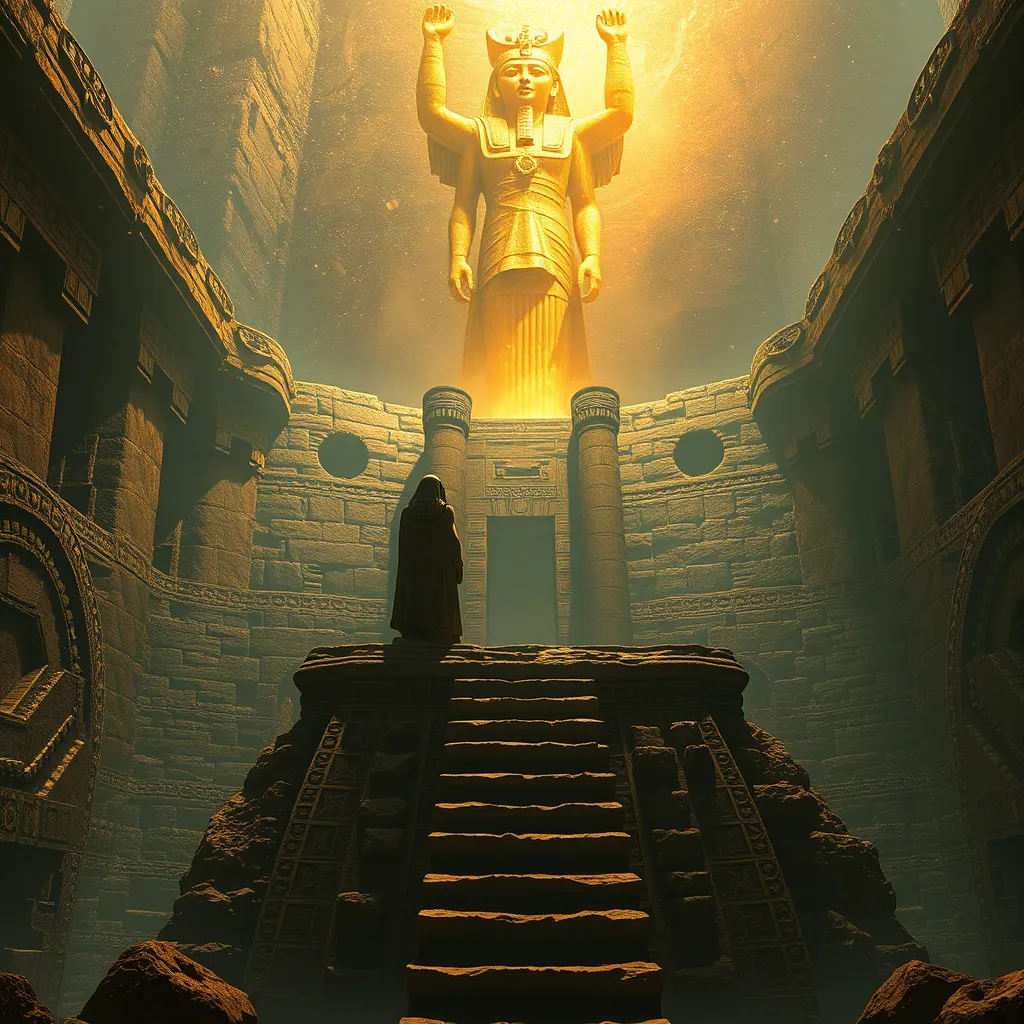The Duat: A Chronicle of the Afterlife
I. Introduction to the Duat
The Duat, often referred to as the Egyptian underworld, holds profound significance in ancient Egyptian belief systems. It is not merely a place of the dead but a complex realm that represents the journey of the soul after physical death. The concept of the Duat was intricately woven into the fabric of Egyptian spirituality, embodying their understanding of life, death, and rebirth.
In Egyptian culture, the afterlife was seen as a continuation of existence, where the soul would embark on a journey to achieve eternal life. This journey was fraught with challenges and trials, underscoring the Egyptians’ beliefs about morality, justice, and the aftereffects of one’s actions during their lifetime.
II. The Mythological Landscape of the Duat
The geography of the Duat is described in various ancient texts as a vast and often daunting realm. It is depicted as being divided into numerous regions, each with distinct characteristics and challenges. Some common features of the Duat include:
- Darkness and obscurity, symbolizing the unknown.
- Rivers of fire and water, representing the trials of purification.
- Fields of reeds, which symbolize rebirth and renewal.
Key figures and deities associated with the Duat include:
- Osiris: The god of the afterlife, who presides over the dead.
- Isis: The goddess of magic and motherhood, often depicted aiding the deceased.
- Anubis: The jackal-headed god associated with mummification and the protection of the dead.
- Thoth: The god of wisdom, who records the outcomes of the judgment.
III. The Journey Through the Duat
Upon death, the transition to the Duat began with the soul’s separation from the body. This journey was crucial, as it determined the soul’s fate in the afterlife. The deceased would travel through various realms in the Duat, encountering numerous obstacles and challenges.
Some trials faced by the deceased included:
- Confronting monstrous beings that guarded the paths.
- Crossing rivers filled with fire, testing their fortitude.
- Navigating through the darkness, symbolizing ignorance and fear.
IV. The Role of the Book of the Dead
The Book of the Dead, known as per em hieret, was an essential guide for the deceased navigating the Duat. This collection of spells and prayers was designed to assist the soul in overcoming obstacles and securing a favorable judgment.
Key spells and rituals included:
- Spells for protection against malevolent spirits.
- Rituals that invoked the aid of deities like Anubis and Osiris.
- Prayers that ensured safe passage through the trials of the Duat.
V. Judgment in the Duat
One of the most critical aspects of the afterlife journey was the Weighing of the Heart ceremony. This ritual determined the fate of the deceased by weighing their heart against the feather of Ma’at, the goddess of truth and justice.
The implications of this judgment were profound:
- If the heart was lighter than the feather, the soul was deemed worthy and could enter the Field of Reeds.
- If heavier, the soul faced annihilation, being devoured by the monster Ammit.
VI. Symbolism and Iconography of the Duat
The Duat is rich in symbolism and iconography, which played a significant role in depictions of the afterlife. Common symbols include:
- The Ankh: Symbolizing life and immortality.
- The Scarab: Representing rebirth and transformation.
- The Feather of Ma’at: A symbol of truth and justice.
Artistic representations in ancient Egyptian art often depict scenes of the Duat, showcasing the journey of the deceased, the judgment process, and the various deities that guide and protect souls. These artworks served as reminders of the beliefs and values central to ancient Egyptian spirituality.
VII. The Duat in Modern Culture
The influence of the Duat extends beyond ancient Egypt and into modern culture. It has inspired countless works of literature, film, and art. Contemporary interpretations often explore themes of life, death, and the afterlife, reflecting humanity’s enduring fascination with what lies beyond.
Some notable influences include:
- Literary works that reinterpret Egyptian mythology, such as The Kane Chronicles by Rick Riordan.
- Films that explore the afterlife, inspired by Egyptian beliefs, such as The Mummy franchise.
- Art exhibitions that highlight ancient Egyptian artifacts and their representations of the Duat.
VIII. Conclusion
The Duat remains a vital aspect of understanding ancient Egyptian spirituality. It encapsulates their beliefs about life, death, and the moral consequences of one’s actions. By studying the Duat, we gain insight into how the ancient Egyptians perceived their existence and the afterlife, providing a deeper appreciation for their rich cultural heritage.
As we reflect on the legacy of the Duat, it is clear that these ancient beliefs continue to resonate in our modern cultural landscape, inviting us to ponder the mysteries of life and what may lie beyond.




